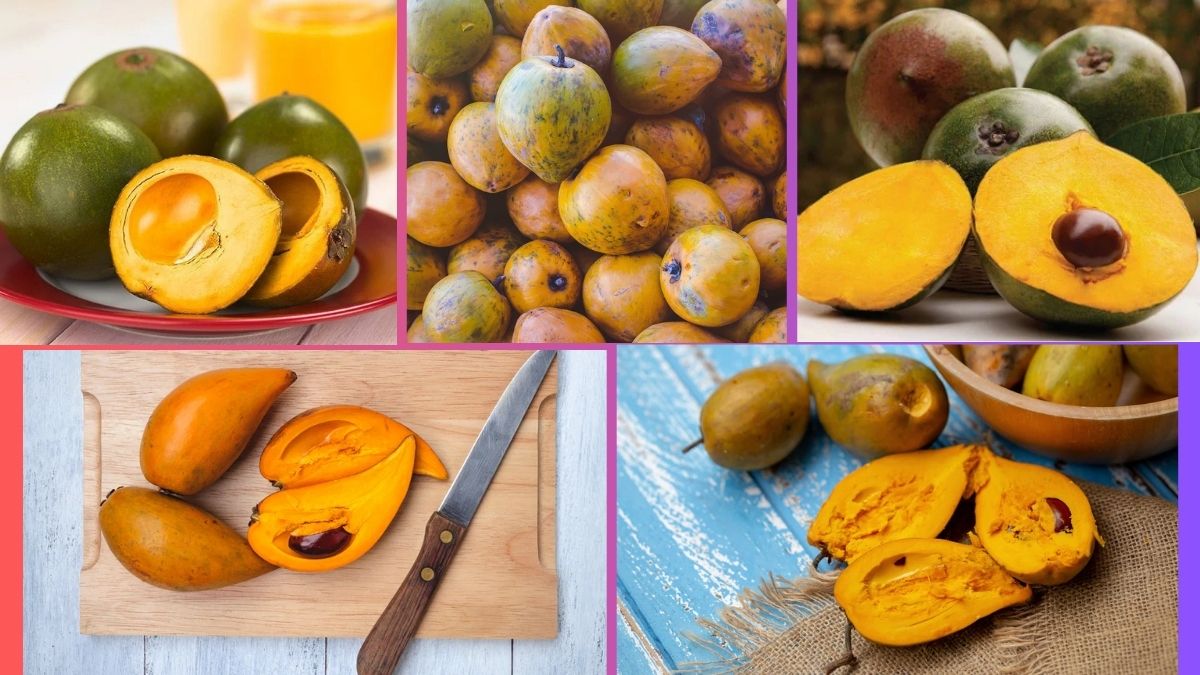Among the growing roster of exotic superfruits sought after for their rich nutritional profiles and unique flavors, Lucuma stands out for its long cultural history and modern-day culinary appeal. Known as the ‘Gold of the Incas,’ this subtropical fruit is celebrated for its creamy texture, naturally sweet taste, and impressive health benefits. From gourmet ice creams to nutrient-packed powders, Lucuma has captured the attention of health food markets and foodies alike.
As Lucuma’s international demand expands, a central question emerges for agronomists, food industry specialists, and cultural historians: Which country is the largest Lucuma producer globally?
The answer is clear — Peru.
In this article, we’ll explore the rich history, botanical characteristics, cultivation practices, production statistics, and export markets for Lucuma, explaining why Peru continues to be the undisputed leader in global Lucuma production.
What Is Lucuma?

Lucuma (Pouteria lucuma) is a fruit-bearing evergreen tree native to the Andes mountains of Peru, Ecuador, and Chile. The fruit itself resembles a small, round or oval greenish-yellow mango, with a firm, orange-yellow pulp and a hard, glossy brown seed in the center.
Often described as having a flavor profile between maple syrup, sweet potato, and caramel, Lucuma’s creamy, sweet flesh makes it a versatile ingredient for desserts, smoothies, ice creams, and health foods. It is also highly valued for its:
- High beta-carotene content
- Rich antioxidant profile
- Low glycemic index
- Potassium, calcium, and iron content
Cultural and Historical Importance
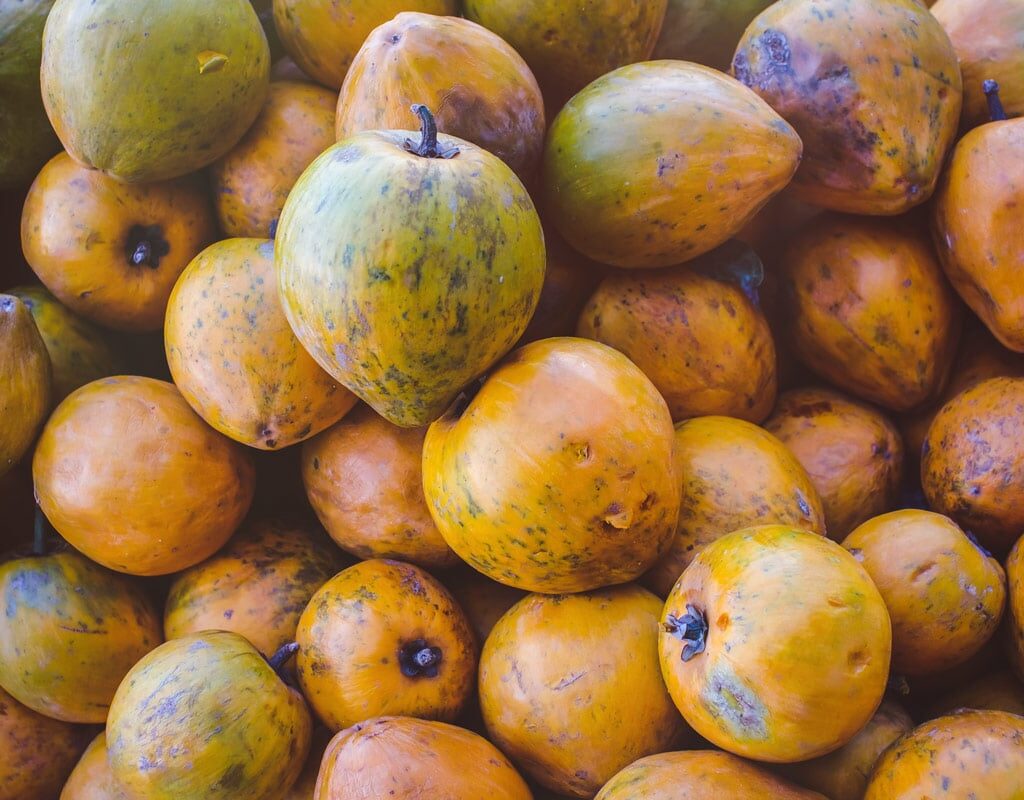
Lucuma has been revered in Peruvian culture for over 2,000 years. The ancient Moche and Inca civilizations prized the fruit for its culinary uses and as a symbol of fertility and abundance.
Lucuma appears frequently in pre-Columbian Peruvian art and pottery, evidencing its long-standing cultural significance. Even today, Lucuma holds a special place in Peruvian cuisine — especially as the country’s most popular ice cream flavor, surpassing even chocolate and vanilla.
Where Is Lucuma Grown Globally?
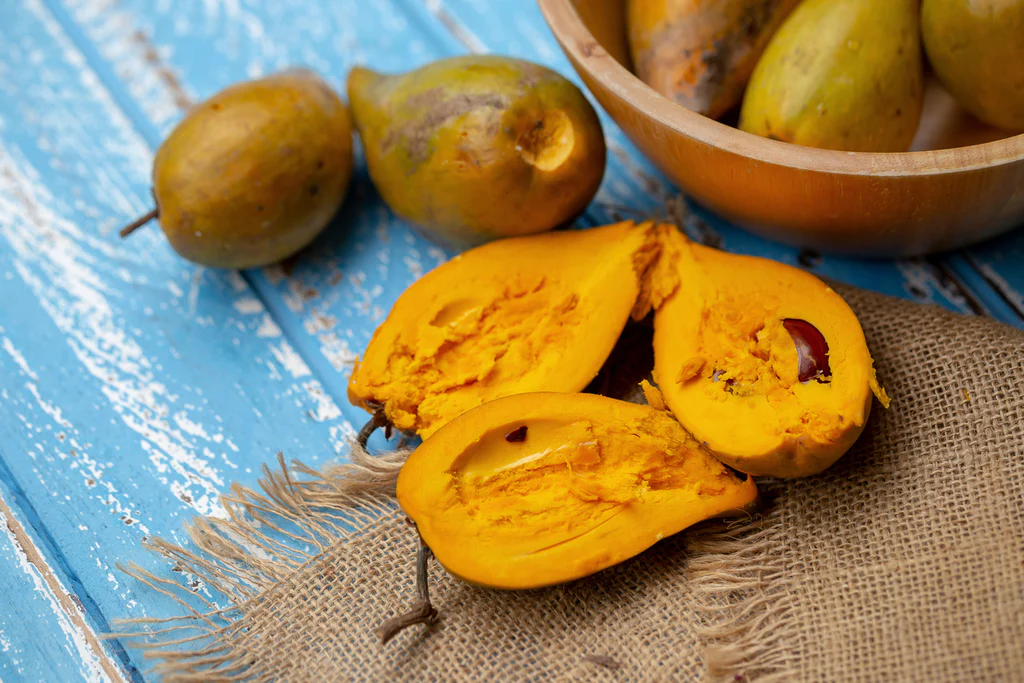
Native and Commercial Growing Regions
Lucuma thrives in subtropical and temperate climates at elevations between 500 and 3,000 meters (1,600–9,800 ft) above sea level. While the tree grows naturally in parts of Peru, Ecuador, Chile, and Bolivia, Peru remains by far the largest producer and exporter.
Key growing regions in Peru include:
- La Libertad
- Ancash
- Cajamarca
- Lima
- Arequipa
- Cusco
Although Lucuma is grown experimentally in other subtropical regions like California, Hawaii, and New Zealand, commercial production in these areas is extremely limited compared to Peru’s extensive orchards.
Why Is Peru the Leading Lucuma Producer?
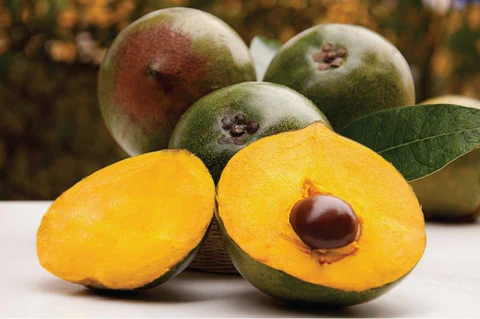
Several factors explain Peru’s dominance in global Lucuma production:
Natural Habitat Advantage
The Peruvian Andes offers ideal growing conditions for Lucuma:
- Well-drained, slightly acidic soils
- Subtropical temperatures (8°C to 27°C / 46°F to 81°F)
- Seasonal rainfall with dry harvest periods
- Elevations between 500 and 3,000 meters
These unique conditions, difficult to replicate elsewhere, make Peru naturally suited for cultivating Lucuma at both smallholder and commercial scales.
Cultural Preference and Domestic Demand
Lucuma is deeply woven into Peruvian culinary traditions. As a favored dessert ingredient and national ice cream flavor, Peru consumes much of its own production domestically, with local farmers and cooperatives maintaining long-established orchards.
Established Infrastructure and Knowledge
Peruvian farmers have cultivated Lucuma for centuries, developing region-specific knowledge of propagation, soil care, and pest management. The country also has dedicated processing facilities producing Lucuma powder, pulp, and frozen puree for domestic and international markets.
Lucuma Production Statistics
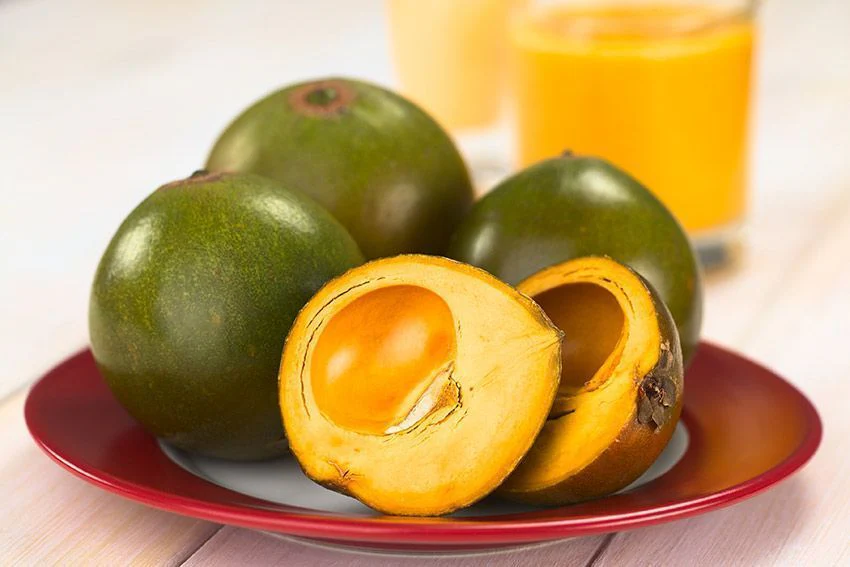
Annual Production Volumes
According to Peru’s Ministry of Agriculture:
- Peru produces over 38,000–40,000 tonnes of Lucuma annually.
- Over 90% of global Lucuma production comes from Peru.
The remainder is produced in small quantities by Ecuador, Chile, Bolivia, and a few experimental orchards abroad.
Export Markets
Peru exports Lucuma primarily as:
- Dehydrated Lucuma powder
- Frozen Lucuma puree
- Dried or frozen pulp
Major export markets include:
- United States
- Canada
- Europe (Germany, UK, Netherlands, Spain)
- Japan
- Australia
Exports of Lucuma products exceeded US$8 million in 2023, driven largely by the superfood and plant-based health product sectors.
Nutritional and Health Benefits
Lucuma’s nutritional profile contributes to its global popularity:
- Rich in beta-carotene (pro-vitamin A)
- Contains potassium, calcium, iron, and zinc
- Packed with antioxidants and polyphenols
- Low glycemic index — a natural, diabetic-friendly sweetener
- Source of fiber
Scientific studies indicate Lucuma’s potential benefits include:
- Supporting eye health and immune function
- Providing anti-inflammatory and antioxidant effects
- Promoting skin health and wound healing
- Serving as a natural energy booster
Culinary and Commercial Uses
Lucuma’s distinctive flavor makes it ideal for both traditional and modern recipes:
- Ice creams and sorbets (Peru’s national favorite)
- Smoothies and shakes
- Baked goods (cakes, muffins, cookies)
- Plant-based desserts
- Nutrient-dense superfood powders for health drinks and supplements
Lucuma powder is particularly prized in vegan, paleo, and clean-label markets for its natural sweetness and caramel-maple flavor.
Industry Growth and Future Potential
The global demand for natural superfoods and plant-based functional ingredients continues to surge, positioning Lucuma as an increasingly valuable export for Peru.
Growth opportunities include:
- Expanding exports of organic and fair-trade Lucuma products
- Developing Lucuma-based snack foods and energy bars
- Introducing Lucuma to mainstream dessert markets outside Peru
- Leveraging Lucuma as a natural sugar alternative for diabetic and low-glycemic diets
Research into Lucuma’s bioactive compounds and antioxidant properties is ongoing, suggesting future applications in nutraceuticals and skincare formulations as well.
Conclusion
To conclusively answer the thesis question:
Peru is, by a significant margin, the largest Lucuma producer globally.
The country’s exclusive combination of natural growing conditions, historical cultivation practices, strong domestic demand, and established export infrastructure cements its position as the undisputed leader in Lucuma production.
While small harvests occur in neighboring Andean nations and experimental orchards exist in parts of California, Hawaii, and New Zealand, none approach the volume, quality, or cultural significance of Peru’s Lucuma industry.
As international interest in native Andean superfruits grows, Peru’s leadership in Lucuma cultivation and product innovation will only strengthen, offering both economic opportunity and cultural export for generations to come.
